Is tap water safe for your turtle? Maybe not. The degree of harm depends on the salt particles, bacteria, nitrates, and overall tank water quality. Water turtles are good pets in many ways. But will it survive the move from wild waterways to an aquarium, especially one filled with tap water? Let’s find out.
Table of Contents
Which Is Better For Your Turtle: Distilled Or Tap Water?
Are you wondering whether your new shell partner’s aquarium should have tap or distilled water? Well, it depends on many factors, and here’s what to look at:
Distilled Water
Distilled water is the safest option for aquatic animals like turtles, who are sensitive to water quality. The pH balance is neutral; it’s safe for drinking and doesn’t contain excessive mineral deposits that can damage marine life.
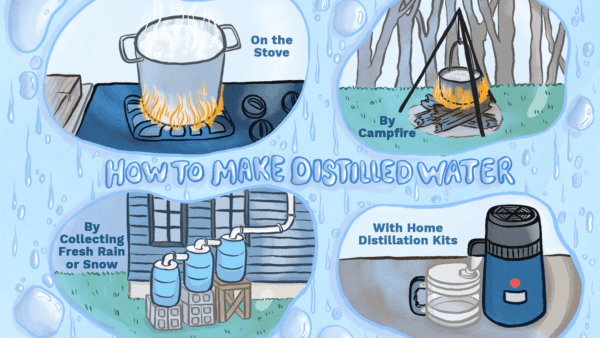
Thus, you can clean the tank water of harmful chemicals and waste using canister filters, but you can also top it up with distilled water as it has zero impact on the tank water.
Moreover, you don’t need to use a water conditioner to treat distilled water in the turtle tank, saving you money.
Tap Water
Tap water is the simplest and most cost-effective option for filling a tank, but should you do just that? Remember that tap water isn’t always safe for human consumption. Many parts of the U.S. have hard water as tap water, which contains many minerals such as lime and calcium.
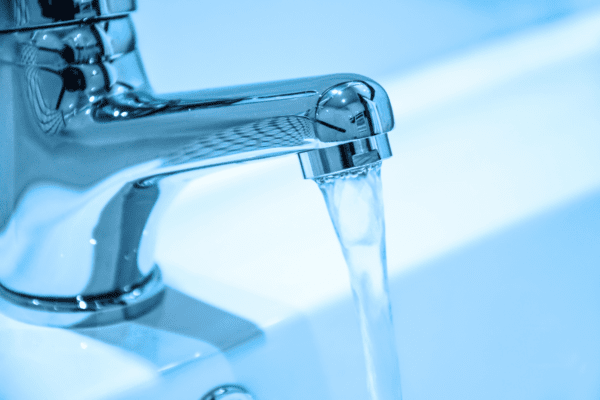
Before using tap water from the sink faucet, make it turtle-safe with a few easy treatment steps. The best thing is to get a water quality report to know what’s in your tap water.
If you’re not sure what to look for in a water report (we understand; they’re pretty technical), here are some crucial things to remember:
- Hard-shelled turtles, such as red-eared sliders, can tolerate a wide range of pH values. However, the more common North American species require a range of 6.2 to 8.5.
- If you have a soft-shelled turtle, the pH should not be lower than roughly 6.5, and the ammonia level in the tap water should be zero.
- Most turtles need a general hardness (GH) for water of 180-200 ppm to ensure their shells and respiratory systems remain healthy.
- If you have a more exotic turtle, visit your veterinarian to establish the pH and water GH the species needs and install a water conditioner.
Chlorine Levels: Chlorine rarely occurs at high enough concentrations to threaten turtles in tap water. If you can smell or taste chlorine, use a water conditioner or leave the tap water in a bucket in the sun for a few hours.
Other chemicals are likely added to the water by your local city council or water supplier to meet government-regulated water quality standards. In most circumstances, if there are a lot of chemicals in the tap water, you should use a reptile-specific water conditioner.
Water conditioner
Suppose your tap water is good enough. In that case, you can use a water conditioner (the easiest and probably safest option, available in any local pet store) or leave the water out overnight in a large container to enable the dissolved chlorine to disperse into the air. Sunlight aids in the natural dispersion of chlorine from tap water.
There are many water conditioners available in the market. Some of the best water conditioners are APITap Water Conditioner, Chlorine Test Strips, Seachem Prime, etc.
What Kind Of Water Does A Turtle Need?
Is tap water safe for your little pet? Yes, when you treat it and make it safe. Alternatively, fill your pet turtle’s swimming area and drinking water with natural spring water or distilled water.
How Can Tap Water Be Made Safe For Turtles?
There are two methods for making tap water turtle-safe. You can dechlorinate tap water with water conditioners or leave it in a separate container for 24 to 48 hours to allow the chlorine to dissolve naturally.
Most of the time, aquatic turtles prefer to be in the water. They drink it, dive in it, and dine in it. So, it’s safe to assume that we must be extra cautious regarding water in our turtle tanks.
In turtle tanks, you can use either tap or bottled water. However, we recommend using treated tap water in the turtle tank, as it’s filtered or chemically treated, to be safe. However, depending on where you live, use your discretion.
Remember, if harmful chemicals like chlorine contaminate your tank water, it can injure your turtle’s eyes.
Turtles are tougher than fish in general. However, this does not mean you should put your turtle at risk by exposing it to high chlorine concentrations.
Read How to take care of a turtle for more on turtle care.
Tap Water for Turtle Tanks: Water Conditioning Treatments
Adding a water conditioner to the water for your turtle’s tank is a great way to ensure they get the best quality water. Even distilled water, which has a neutral profile, requires some water conditioning so it can be more suited to your turtle’s specific needs. Here are some excellent water conditioners for turtle tanks to get you started:
TetraFauna AquaSafe Water Conditioner for Reptiles & Amphibians
This water conditioner from TetraFauna is essential for aquariums housing amphibians and reptiles, which also makes the water safe for turtles.
Features:
- Enough to treat 100 gallons
- Neutralizes harmful chemicals in tap water, making it safe for turtle tanks
- Binds chlorine, chloramines, ammonia, and hard metals (ensuring these are filtered out)
- Rich in colloids to help protect your turtle’s skin
Pros
- Cost-effective for refilling the tank as you only need one teaspoon per 10 gallons of water added
- Liquid, so it easily dissolves into the tank water
- Great price
Cons
- The additional colloids are great for turtles, but makes aquarium plants slimy
Crystalpro Turtle & Amphibian Aqua Conditioner
For a more concentrated water conditioner, Crystalpro’s turtle and amphibian conditioner is a great choice.
Features:
- One bottle is enough for 660 gallons of water
- Removes chlorine, ammonia, and heavy metals
- Makes tap water safe for adding to your aquarium
- Adds healthy minerals and electrolytes to the water, improving your turtle’s health
Pros:
- Convenient drop dispenser, no more messy measuring
- 15 drops is equal to one milliliter, which treats five gallons
- Cost-effective
Cons:
- Bad smell to the conditioner in the bottle, but not so pungent when added to the water
Josh's Frogs Dechlorinator Tap Water Conditioner
Simpler is often better, and Josh’s Frogs Dechlorinator is a simple and effective way to get baddies out of tap water so your turtles can enjoy their water.
Features:
- Great quality dechlorinator
- Removes chlorine and chloramines from tap water
- Available in two sizes, four ounces and 16 ounces
- Safe for aquatic plants
Pros:
- Improves water quality for house plants too
- Easy drip dispenser
- Highly concentrated
- Only requires two drops per gallon of water
- Fair priced
Cons:
- The product isn’t well packaged, and leakage is often the result of the bottle not being correctly sealed
Red-Eared Sliders’ Water Requirements
Red-eared sliders are popular and resilient turtles to keep, so their water requirements may be at the top of your list of questions. Here’s what you need to know before opening the tap and filling up their aquarium.
Is Tap Water Ok For Red Eared Sliders?
As discussed above, eared sliders are tougher than regular turtles. They can sustain themselves well when the water temperature, chlorine levels, and nitrates are slightly higher than required (ammonia excluded).
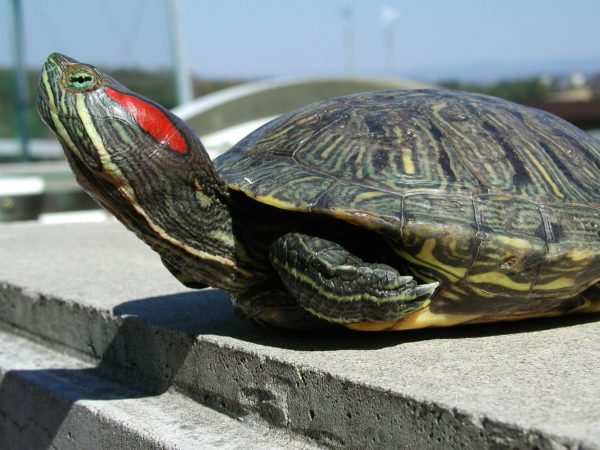
Here are a few things you can do to keep your red-eared slider healthy:
Getting Clean Water To Drink
These sliders drink the water they dive in. Keep their tank clean at all times. Thus, clean out the water filters to treat the water and prevent the tank from getting silted and toxic. Also, remove any feces or waste as soon as you notice it as quickly as possible.
Turtles are prolific in the elimination department, so try to skim any debris at least once daily. Changing the water at least once a week, if not more frequently, is critical.
This way, your turtle tank can remain cleaner, especially if you have more than one turtle.
Use one of the methods for dechlorinating tap water discussed above before a water change.
Other Water Specifications
Always pay attention to your red-eared slider’s water requirements. Your slider could get parasites if it dives into — and drinks — water that is soiled or contaminated.
Maintain a water temperature of 75 to 86 degrees Fahrenheit. Because sliders are cold-blooded, exposure to significantly lower temperatures can cause various health problems, including gastrointestinal issues.
Is It Better For Turtles To Swim In Cold Or Warm Water?
Most common pet turtle species dislike diving into excessively cold or hot water. Sliders prefer a water temperature of 75 to 86 degrees Fahrenheit; temperatures below 75 degrees are too cold, while temperatures above 90 degrees are too hot.
If the water is too cold, your turtle won’t want to swim in the aquarium. Cold water might cause respiratory diseases and other health problems.
Similarly, if the water in your tank is too hot, your turtle may be unhappy and suffer circulatory issues.
Whatever the case, this should be the first item you look into.The Gallon Aquarium Heater Titanium Tube is our favorite water heater. It can heat up to 120 gallons of water, which is ideal if you have a large tank for your aquatic turtle.
Is It Possible For Aquatic Turtles To Swim In Cool Water?
When the temperature in the environment isn’t right, the turtles get sick. As a result, your responsibility as a turtle owner is to ensure that the turtles enjoy the proper temperature. When they become unwell, you will have to spend more money on their treatment than you should.
Now, let’s return to the original question. Is it possible for turtles to dive in cool water? Both yes and no. Yes, because turtles need to cool their body temperatures occasionally, and no, since they can become unwell.
Turtles do not do well in cool water. Most turtles get sick if they spend too much time in cool water. As a result, unless you’re reducing the turtle’s body temperature, you should avoid using cool water.
What Temperature Is Too Cold For an Aquatic Turtle?
Since turtles are cold-blooded, when temperatures are low, they enter a state of metabolic stasis, where their circulation slows to almost nothing.
That is to say, the turtle becomes virtually dormant at cold temperatures. The turtles become cool-stunned, which can cause their vital organs to fail.
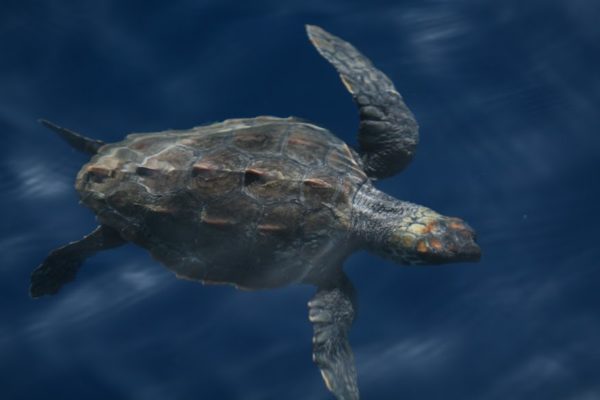
They have a slower heart rate and poor blood circulation. In addition, if the cold persists, they may quickly get frightened and die. To prevent these things from happening, ensure the temperature around the turtles is close to that of the room.
When Is A Turtle In Cold Water, What Happens?
It is amusing to learn that pet turtles, like humans, have lungs and breathe air. So, how long can turtles stay in cool water?
The simplest explanation is that their metabolism slows down in cool water. Hibernation is another name for it. The colder it gets, the slower the metabolism.
As a result, they will require extremely little energy and very little oxygen. Turtles can also engage in cloacal respiration when they don’t have enough air around them or have extremely low vitals.
They have subdermal and internal air pockets that allow them to do remarkable things. For example, they fill and empty the pouches with oxygenated water. This assists the turtles in breathing underwater, and it’s also how they live when their metabolism drops. Hibernation is also why turtles can go for long periods without eating.
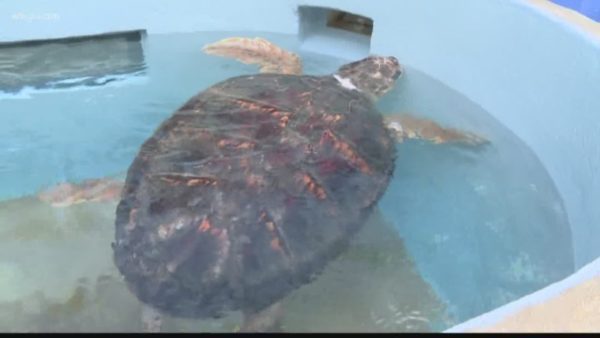
Also Read: Can turtle Drown?
Why Is It That My Turtle Refuses To Go Into The Water?
The two most prevalent reasons for an aquatic turtle like a red-eared slider refusing to enter the water are that the water temperature is too cold or they are unwell.
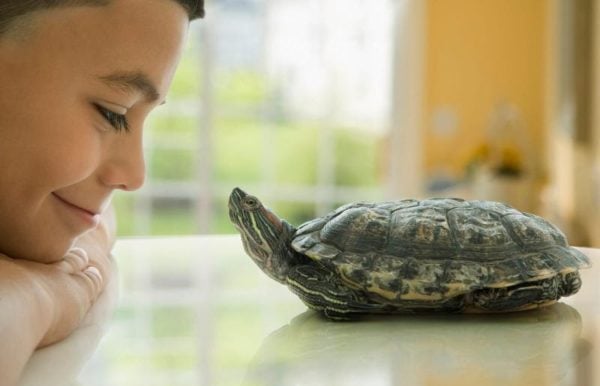
Other explanations could include:
- The Water is causing it to irritate.
- Other turtles are bullying your turtle.
- The water is far too hot.
FAQ:
Tap water can kill your pet turtle if you haven’t checked the water quality and prepared it through filtration, the addition of water conditioners, or by leaving it in the sun for 24 hours to remove any chlorine in it.
Chemicals commonly found in tap water can cause your turtle to become sick, turn blind, or even stain their shell.
Tap water may contain chemicals such as chlorine, ammonia, and lime that could be harmful to your turtle, especially if these are present in large quantities.
It is best to get a water quality report on your tap water before you start using it, and also test the water with a pH strip test kit to ensure values don’t change before each tank refill.
If the tap water has been correctly prepared by testing it, removing any chemicals through filtration and the addition of water conditioners, and leaving it in the sun to remove chlorine, then tap water is completely harmless for your turtle.
However, if you add tap water directly to the tank, you could cause serious illness and harm to your turtle.
Using distilled water for your tank means you use a completely neutral water that contains no minerals or additives that could harm your turtle.
However, the pH may also not be exactly what your turtle needs, so adding some water conditioners to the water is best. As a whole, if you need to top up your turtle tank in a rush, you can use distilled water that’s at room temperature.
Conclusion
So now you know the answer to “Is tap water safe or not for your turtle.” However, when you domesticate a turtle from the wild, the water change to tap water can affect its health if you live where it needs treatment before it’s safe to use.
If you are a new turtle owner and get an exotic turtle for your small to medium turtle tank, ensure the same tank should have at most two or three of them.
The reason for this is that turtles live in deep freshwater areas where they have loads of food and plants. However, having more than one turtle in a tank increases the competition for natural resources.
Moreover, if one of the turtles isn’t healthy, it can infect the others.
So, pay extra attention to the water condition of the tank. Stick to the basics: clean the tank occasionally with a half gallon of water and sanitize it well. Using a water conditioner to minimize chlorine and kill harmful bacteria makes tap water safe. Use an appropriate tank filter and clean daily.
No related posts.

